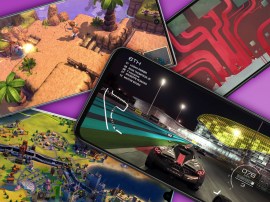Asus ROG Phone 9 Pro review: for the players
Proves a great gaming phone is about more than just performance
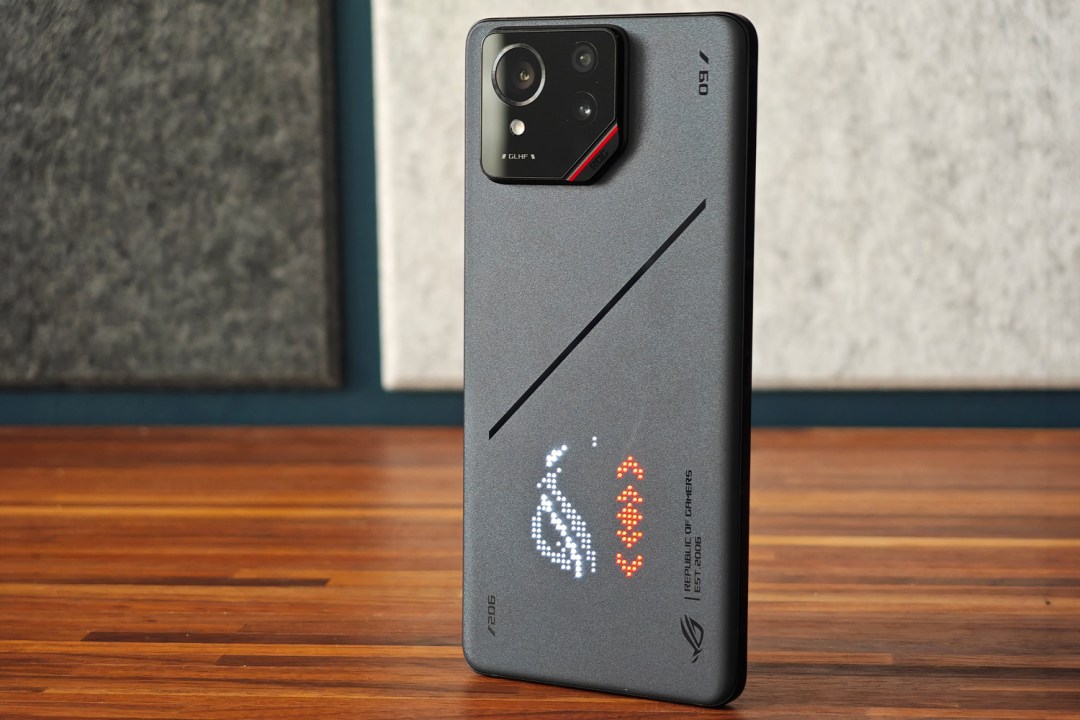
Stuff Verdict
With prodigious performance and gamer-focused features, the Asus ROG Phone 9 Pro is the undisputed king of its niche. You’ve got to be committed to take one over an all-rounder flagship, though.
Pros
- Outrageously powerful and with an extensive gaming accessory range
- Rapid refresh display and engaging audio
- Subtle take on gamer-grade design, with distinctive two-colour matrix lights
Cons
- Other flagships aren’t exactly slow in comparison
- Cameras can’t compete with similarly-priced mainstream rivals
- Pro Edition model remains eye-wateringly expensive
Introduction
We’re now firmly into new silicon season, with almost every upcoming smartphone promising a flagship chipset from either Qualcomm or MediaTek. Asus is among the first to bring Snapdragon 8 Elite to Western audiences, with the latest version of its gaming-grade hero. The ROG Phone 9 series prioritises performance and has extensive accessory support – but hasn’t forgotten the need for some mainstream appeal.
Styling that won’t look out of place next to iPhones, Galaxies or Pixels is the order of the day, while uprated cameras and a bigger battery give it an edge over the outgoing ROG Phone 8 Pro. Hardcore players may not appreciate the fact Asus hasn’t rowed back any of that phone’s more controversial changes, though, and this new version will leave an equally sizeable crater in your bank balance.
The regular ROG Phone 9 starts at £950/$1000/€1099, while the Pro costs £1100/$1300/€1200. The Pro Edition tested here, which includes the AeroActive Cooler add-on, commands a whopping £1300/$1500/€1499. Can it really rub shoulders with mainstream flagship phones enough that everyone should take notice – and not those who rack up hundreds of hours of play time?
How we test smartphones
Every phone reviewed on Stuff is used as our main device throughout the testing process. We use industry standard benchmarks and tests, as well as our own years of experience, to judge general performance, battery life, display, sound and camera image quality. Manufacturers have no visibility on reviews before they appear online, and we never accept payment to feature products.
Find out more about how we test and rate products.
Design & build: Red LED-er day
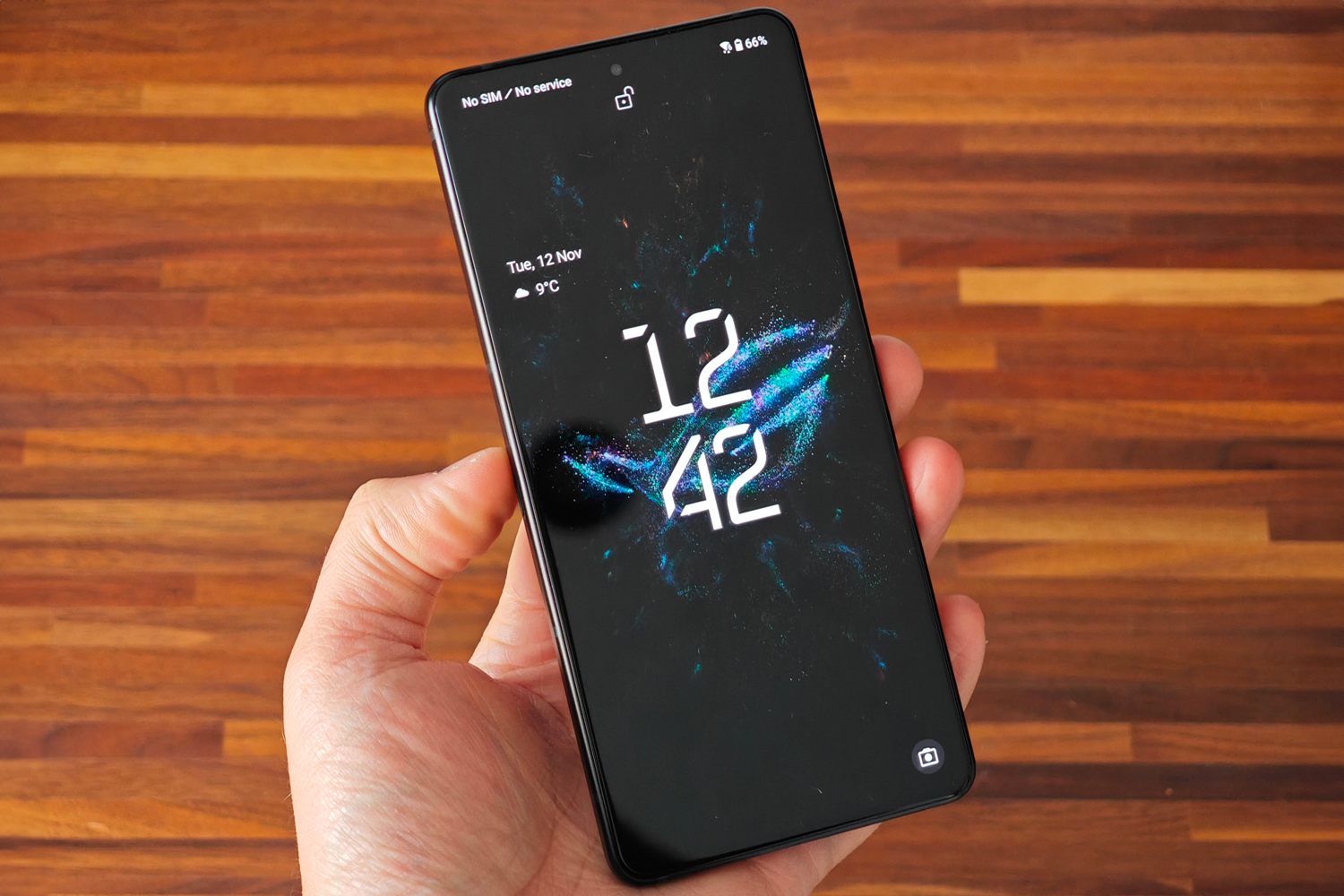
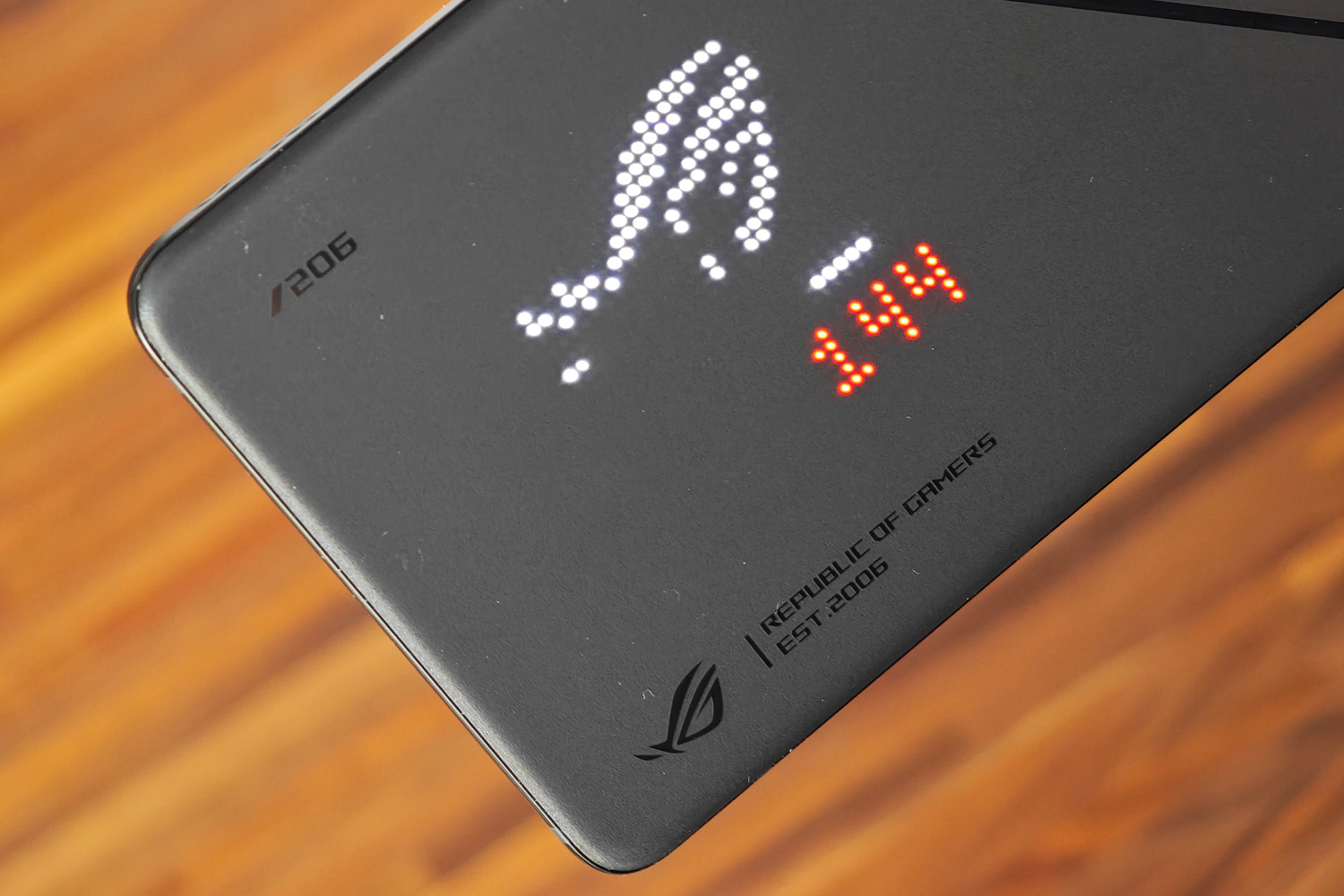
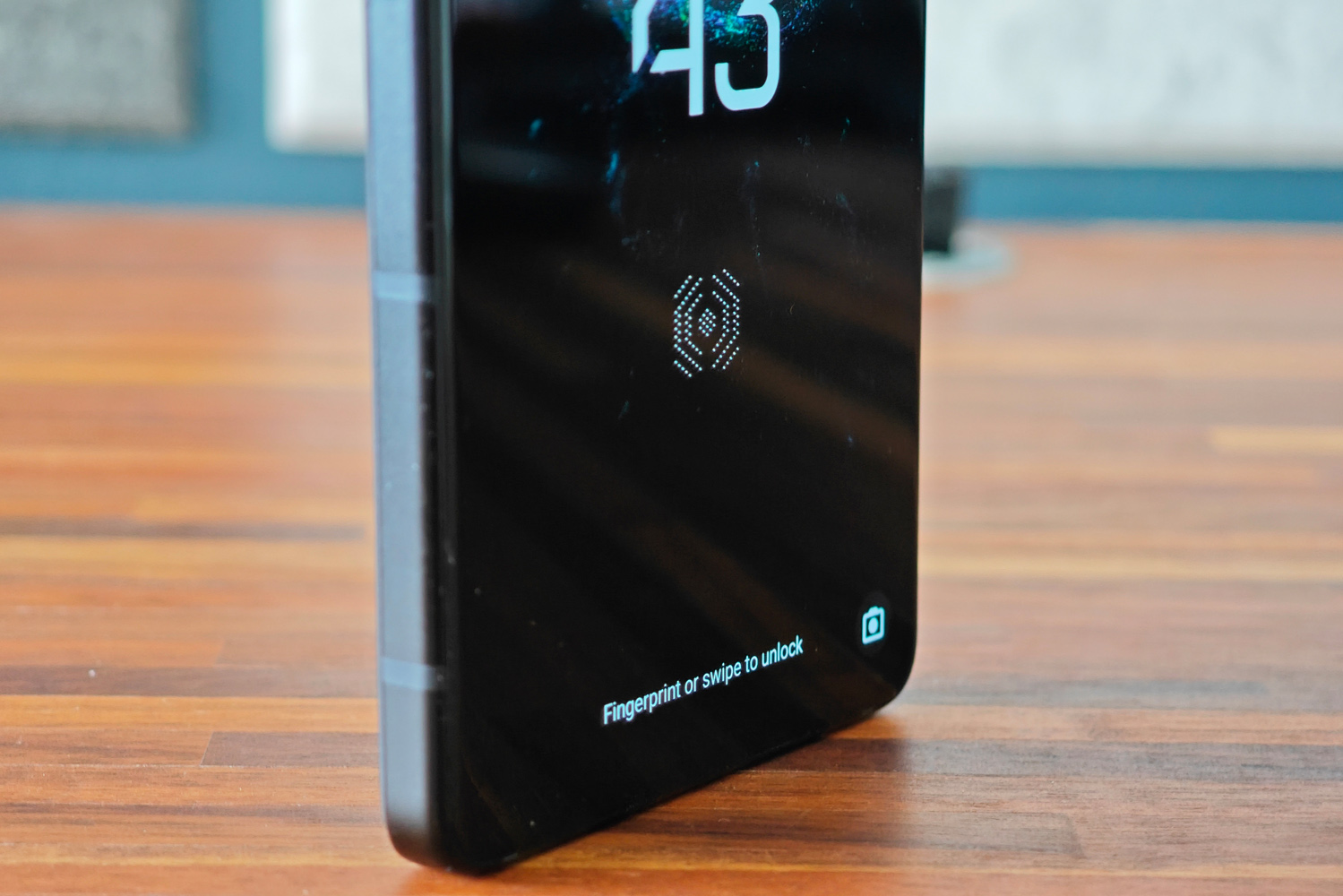
At first glance the ROG Phone 9 Pro isn’t all that different from last year’s effort. It has the same frosted glass back, same angular camera bump, and same refreshingly narrow screen bezels up front. The black metal frame has flat sides that make it easier to grip securely, and leave plenty of room the the touch-sensitive air triggers on the right edge. Even with a few mecha-inspired graphics it avoids most of the gamer phone stereotypes.
Or it does until you turn it on, and the AniMe Vision panel winks into life. Asus has doubled the number of mini-LEDs (from 341 on the ROG Phone 8 Pro, to 648 here) and added a section of red ones for some extra contrast. That makes the remaining battery life, time and music animations even more eye-catching when sat face-down on a desk. There are even some built-in games, controlled with the air triggers, that pay homage to classics like Breakout and Snake. The LEDs still sit beneath the glass, so are impossible to spot when switched off – handy if you prefer an incognito look. It’s still a novelty, much like the Nothing Phone 2‘s glyph lighting, but one I’m glad to see Asus continuing to iterate.
The extra LEDs haven’t done the ROG Phone 9 Pro’s weight any favours, but at 227g it’s only 2g heavier than the outgoing version. It’s actually on par with an iPhone 16 Pro Max, which uses titanium to keep its heft in check. There’s a reassuring heft to the phone that some similarly-sized rivals just can’t match. I’m very glad to see Asus continuing with IP68 certification, too; rain showers and even accidental dunkings aren’t a problem for this phone.
You get face and fingerprint security, with the latter being via an under-display sensor that did a good job of recognising my digits. The facial scanning isn’t secure enough for banking apps, though.
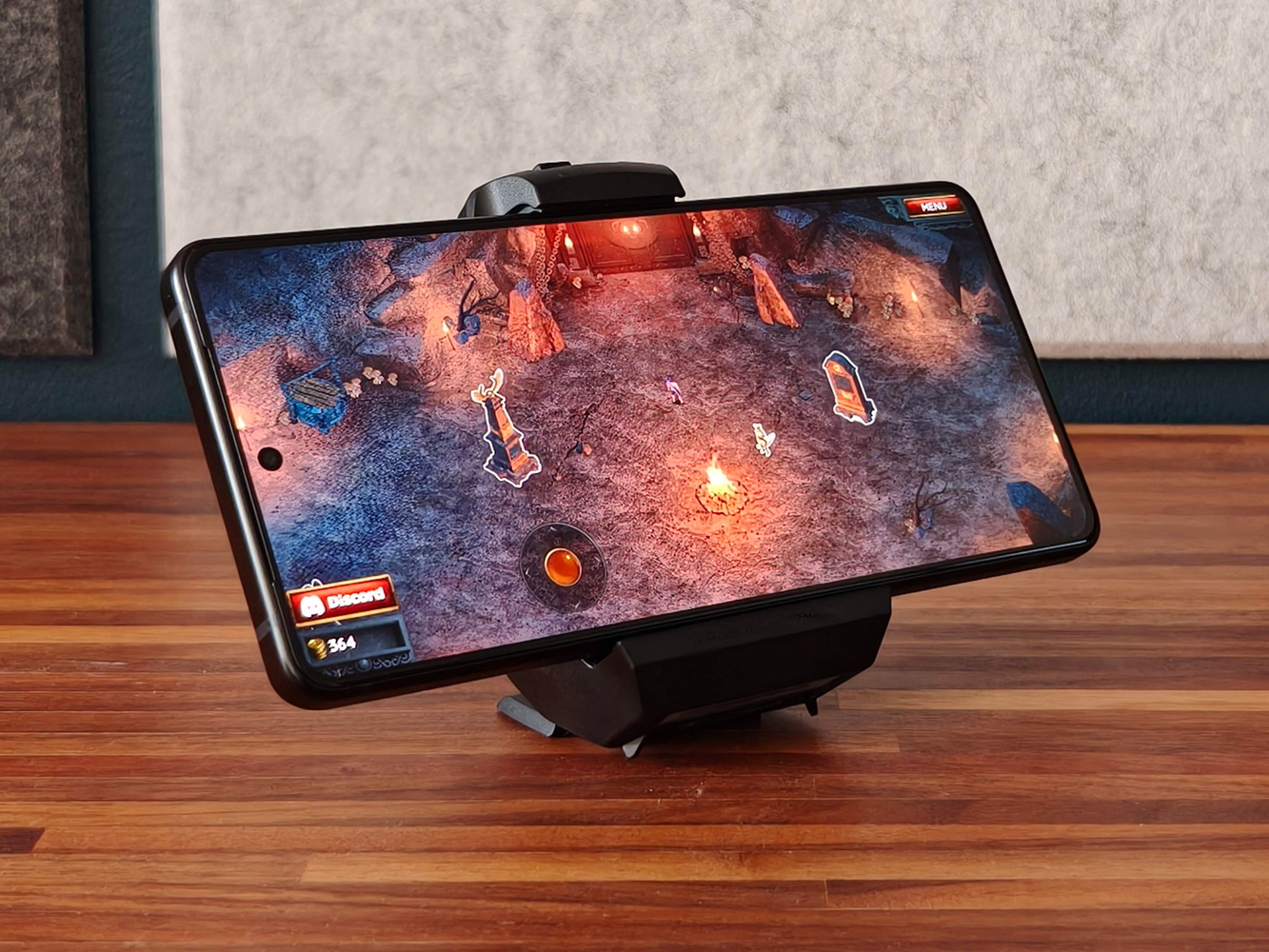

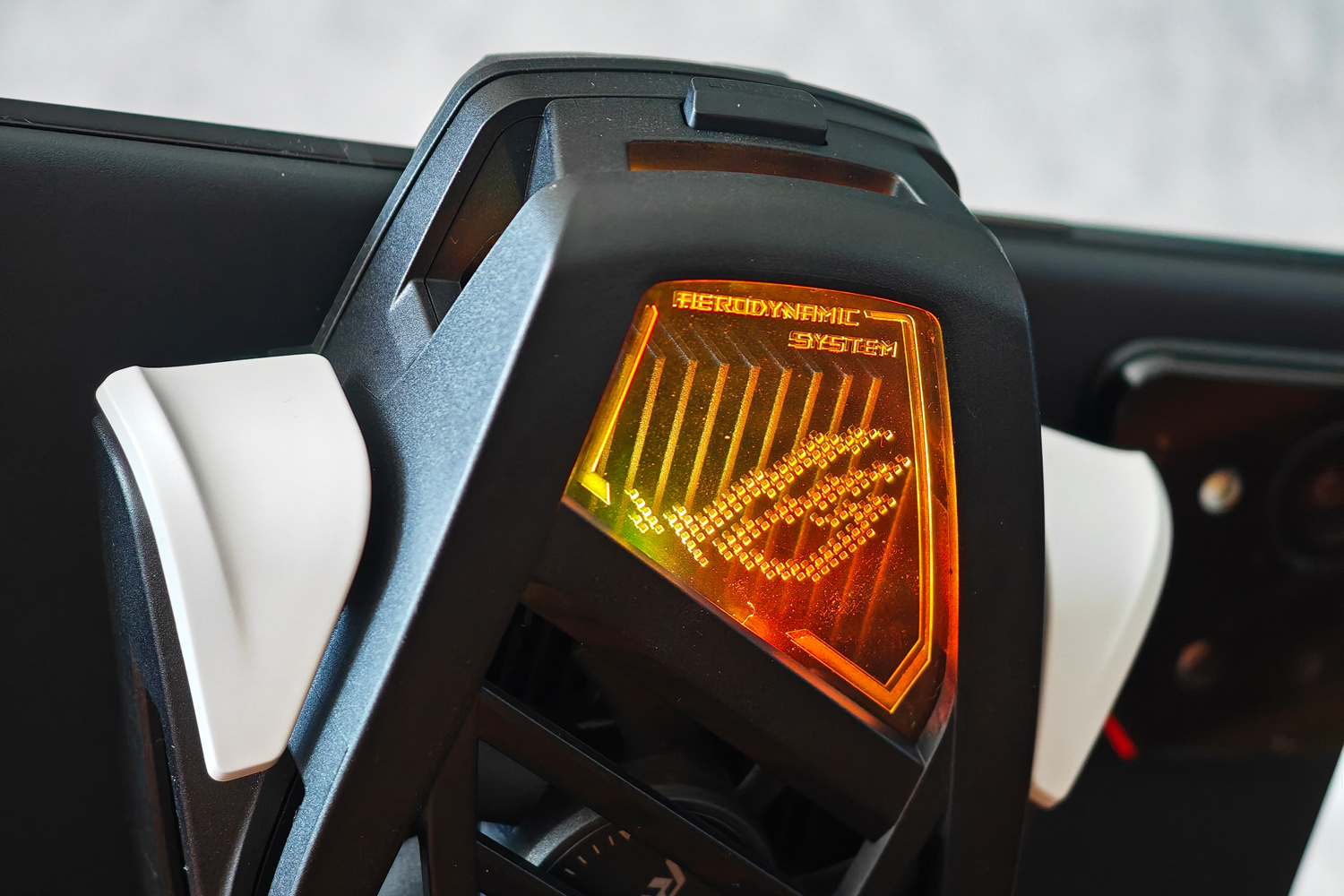

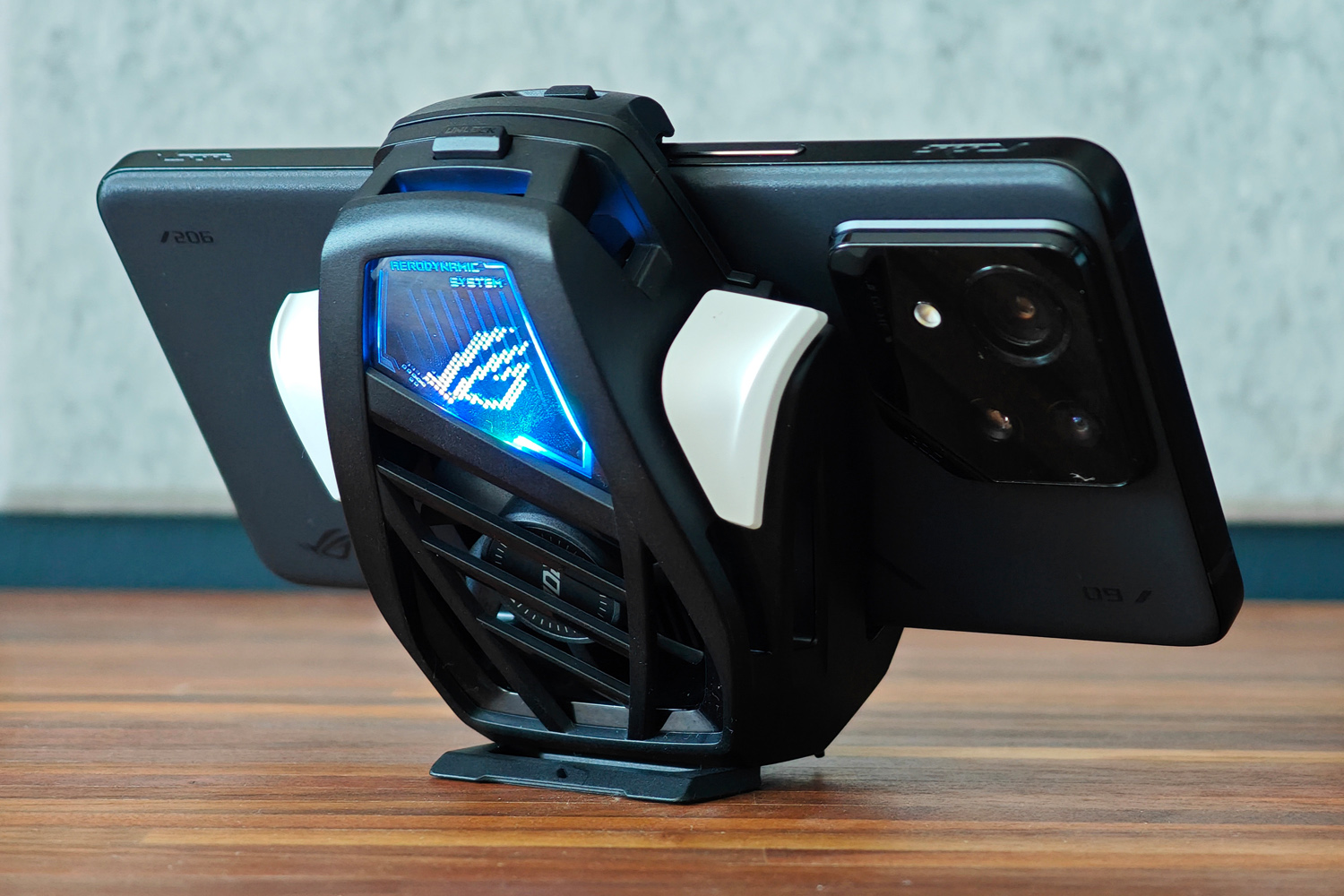
The USB-C port at the phone’s bottom edge is still offset, and still causes issues with some third-party accessories. A good job Asus has an extensive selection of first-party ones, then, including the £90/€100 AeroActive Cooler X Pro (which comes bundled with the premium version of the ROG Phone 9 Pro). This clever add-on plugs into the side-facing USB-C port and uses thermoelectric cooling to slash surface temperatures way more than its built-in fan could alone, letting the chipset run harder for longer.
Longer fan blades make this version both quieter and a little more effective than the last one. It brings the same useful feature set, including a kickstand, passthrough USB-C and 3.5mm ports, RGB lighting, a small subwoofer speaker (which adds some welcome bass presence to the phone’s audio), and two extra physical buttons for gaming. You can power it through the phone if you’ve got battery to spare, or through an external cable – though with the ports being on the bottom, you can’t also use the kickstand at the same time. I’d say it’s still a worthwhile buy for ROG Phone 9 owners, though, as that TEC chiller really can work wonders during long gaming sessions.
Screen & sound: speed demon
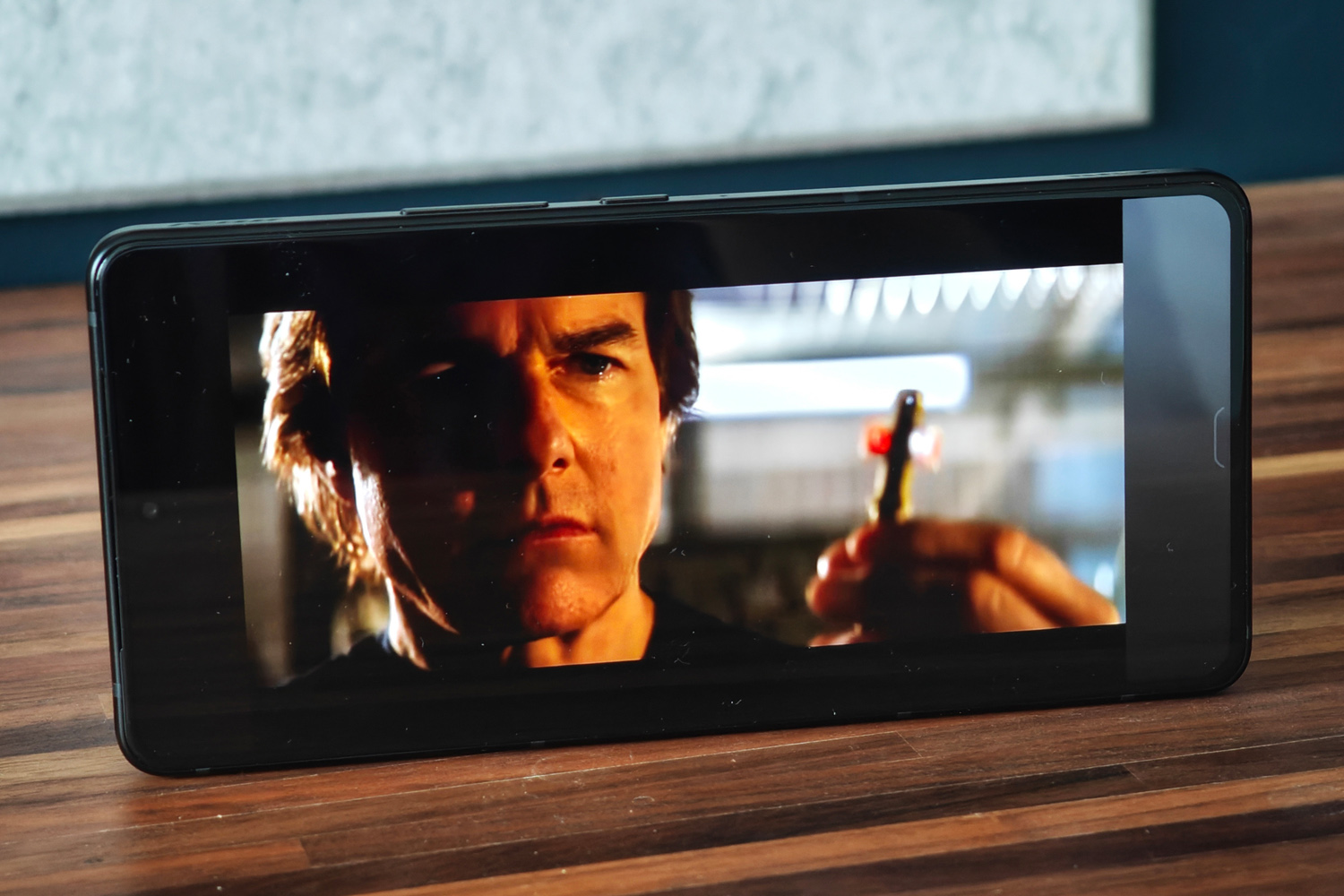
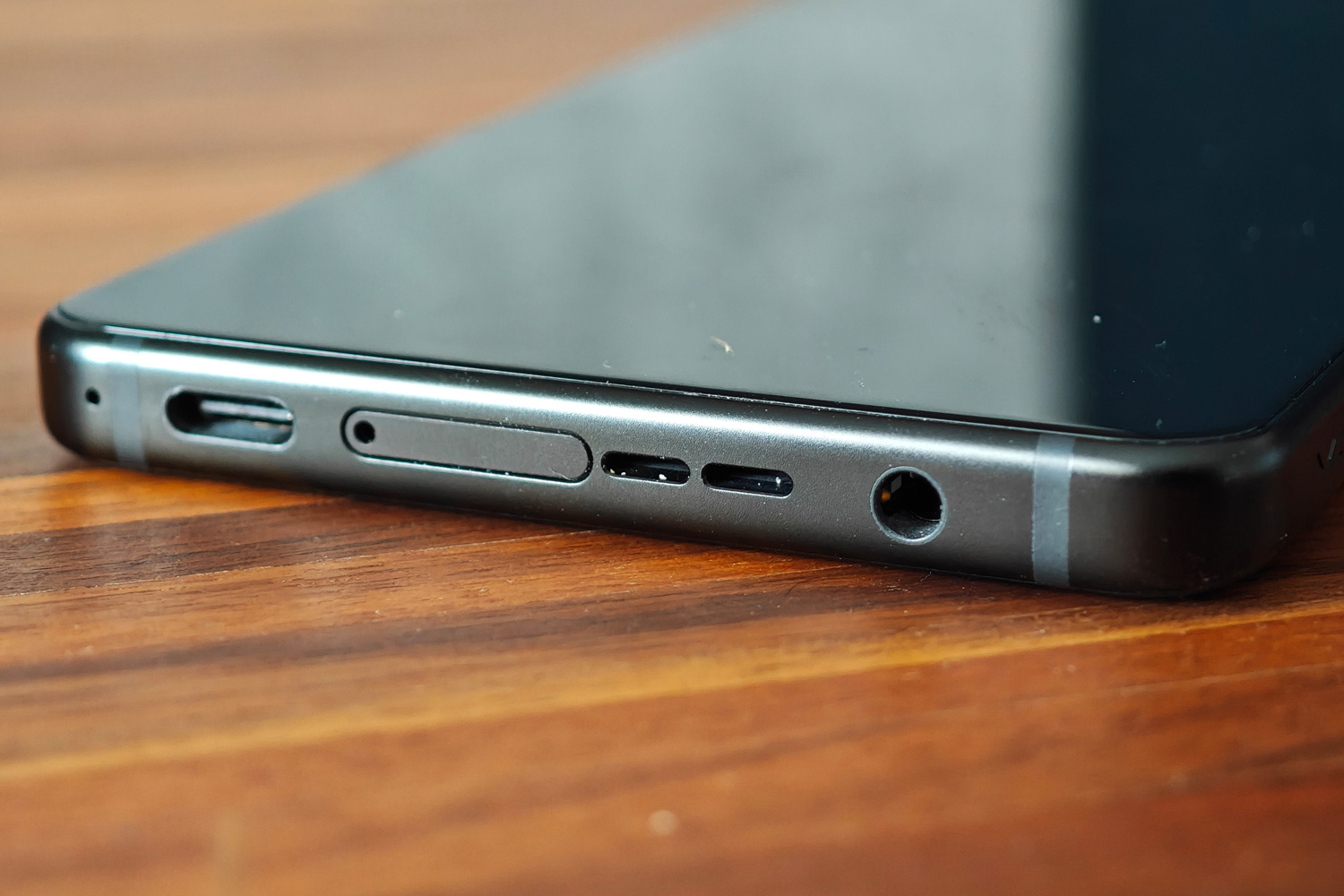

The outgoing ROG Phone 8’s screen was about as play-friendly as they come. It had epic contrast and vibrant colour courtesy of an OLED panel, a super-fast 165Hz refresh rate while gaming (plus LTPO adaptive refresh tech when not), and an impressively high peak brightness. That’s all still true of the new model.
You’re getting the same 6.78in screen size and 2400×1080 resolution as before. The latter isn’t huge, but means the chipset GPU isn’t working overtime to render so many pixels; it looked plenty sharp enough to me at arms’ length. The slim display bezels might not leave much space for your thumbs while gaming, and the days of front-facing cameras not punching their presence through the display are long gone, but I didn’t find either distracting while watching videos or gaming. There’s also an option in the Settings menu to leave that section of screen black, if you’re not a fan.
Officially this phone manages the same peak 2500 nits as its predecessor, but that’s only true when showing HDR content – and even then just a small portion of the screen. 1600 nits in High Brightness Mode (HBM) is more like what you’ll actually see, and meant I had no major issues using the ROG Phone 9 outdoors. An autumnal UK isn’t quite the Sahara in summertime, though, so your mileage may vary. Certainly there are mainstream flagships that get considerably brighter.
The most substantial upgrade is a new 185Hz refresh rate option, which is exclusively used while gaming. That’s about as fast as any phone screen I can think of, though I can’t think of many Android games where that’ll give you any real competitive edge. I struggled to spot the difference between it and the 165Hz refresh rate seen everywhere else, though I haven’t invested a huge amount of time into multiplayer twitch shooters on mobile. It’s nice to have, though not worth upgrading from a previous ROG phone just to have.
Asus ditched front-facing speakers last generation, and fan grumbles weren’t enough for it to reverse course here. That means the ROG Phone 9 Pro gets a down-firing main driver and an earpiece tweeter, which do at least get fairly loud and give a decent sense of stereo separation. I just wouldn’t say they’re any better than a non-gaming phone. At least the 3.5mm headphone port sticks around, for personal listening or hooking up a wired gaming headset.
Cameras: stable shooter
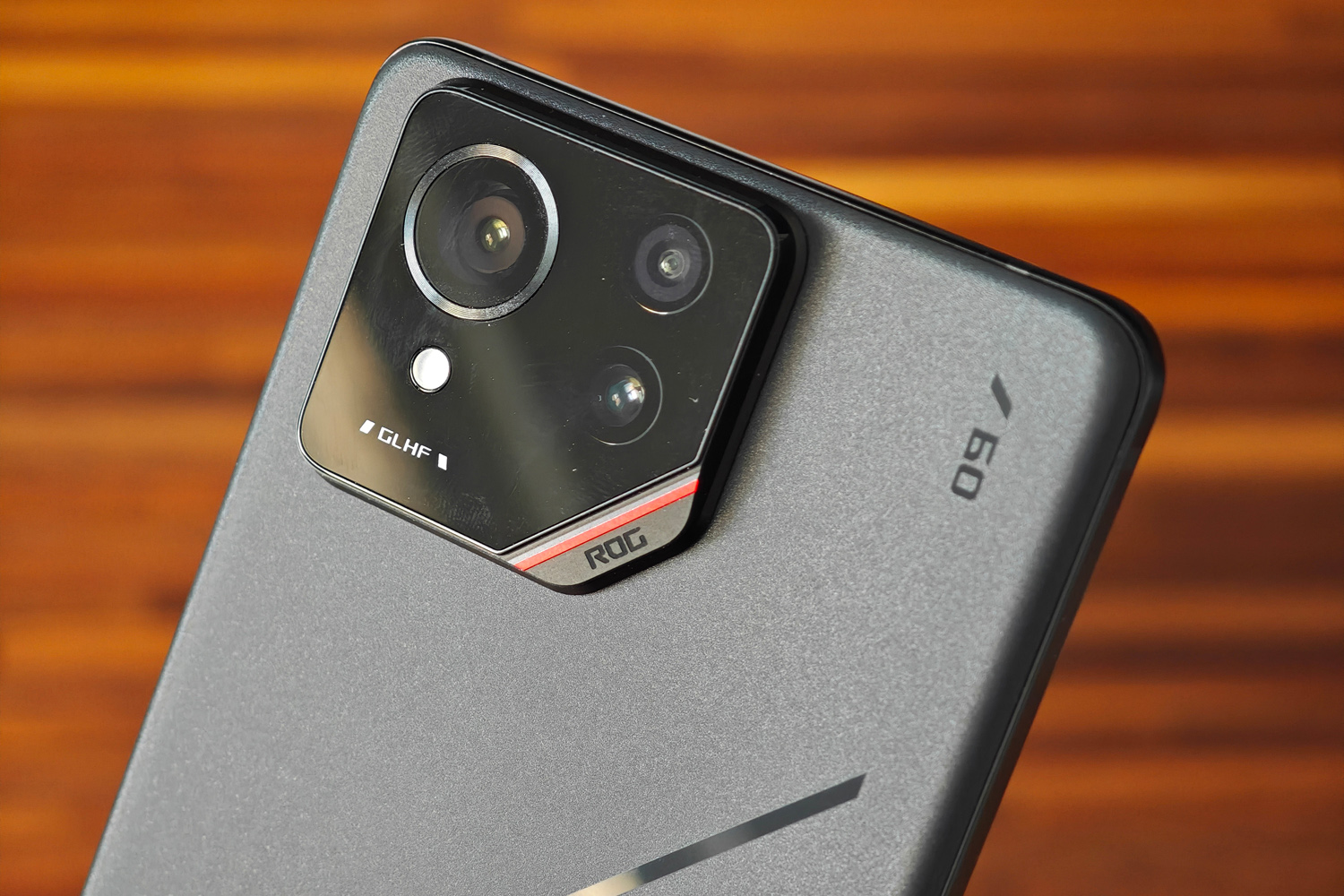

Gaming phones and photography rarely go hand-in-hand, but last year’s ROG Phone 8 made some welcome strides by ditching the superfluous macro snapper for a much more useful telephoto zoom. The sequel goes a step further, upgrading its lead sensor for a more capable, Sony-supplied Lytia 700. The 50MP unit also gets an improved version of Asus’ 6-axis gimbal stabilisation, with an extra +/- 5 degrees of motion compensation to cope better with handheld video recording and low-light stills shooting.
It’s still paired to a 32MP zoom (with 3x optical magnification and 30x digital upscaling trickery) and a 13MP ultrawide (which doesn’t have any tricks like macro focus). There’s also a 32MP selfie cam up front with an RGBW sensor that captures more light than a typical RGB one.
The camera app sees a few new additions, including an AI-assisted panning app and a portrait video mode that adds pretty convincing depth blur to footage shot using the main camera. Photo Vibes are a lot like Apple’s photographic styles, warming up or cooling down a scene without stepping into Instagram-style filter effects. A quick capture mode also promises zero shutter lag, but it disables other features when turned on, and the only way to toggle it is with a laboured trip through the Settings menus.






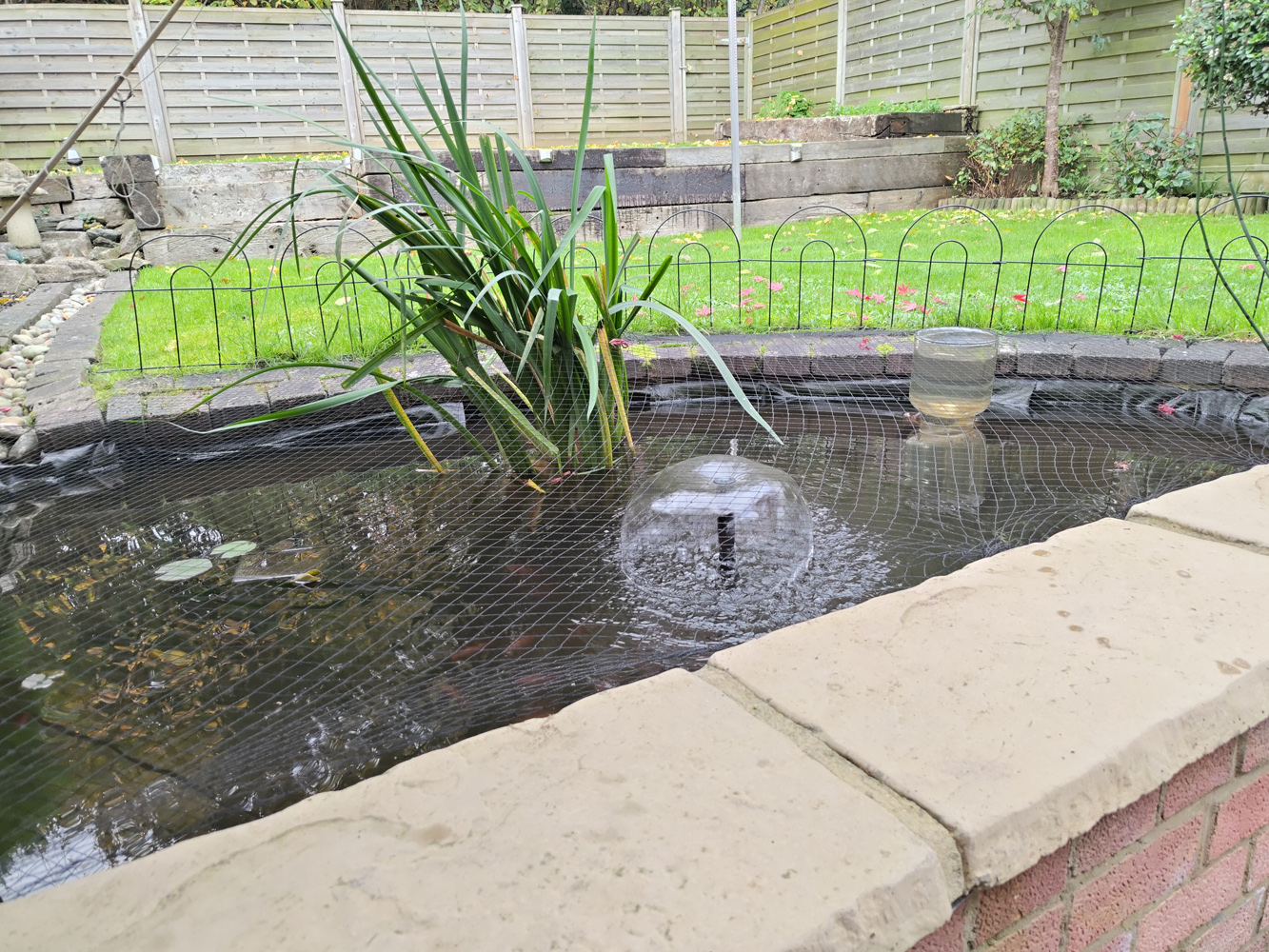

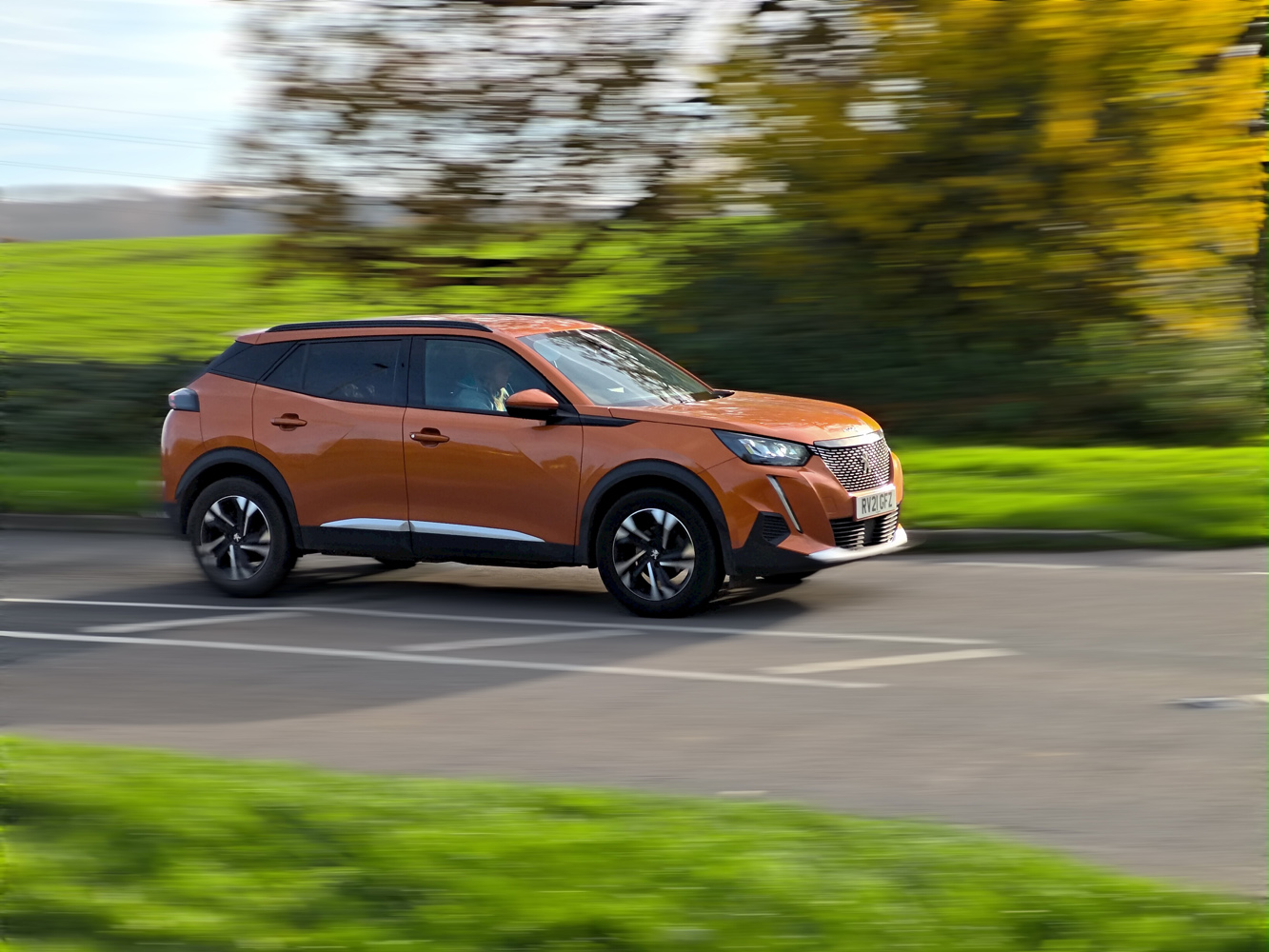



Take a brief look at the sample shots above and you’d be hard-pressed to say they came from a gaming phone. The lead lens puts in an admiral showing during daylight hours, with natural-looking colours using the Default photo vibe and a decent amount of dynamic range. Greens and reds appear a little more vivid than reality, and it tends to brighten scenes that were actually drearier in person, but there’s a good amount of fine detail on display. Oversharpening is kept largely in check, but I think rivals do a better job with contrast. The improvements from last year aren’t huge, but they’re absolutely there.
3x zoom shots using the telephoto are clearly sharper and more defined than 2x shots cropped from the main sensor. Noise is controlled and colours are consistent, while depth blur is convincing. It’s a strong showing all-round. The digital zoom can crank as far as 30x, but I found quality took a nose dive long before then – I wouldn’t use anything beyond 10x for social sharing. The ultrawide has fewer pixels to work with and doesn’t handle exposure quite as well, so is the weakest of the three cameras. It can still take a well defined photo of a middle distance subject, but further away landscapes aren’t exactly popping with detail.






Low light still favours the lead snapper and its gimbal stabilisation, which helps lower the shutter speed without introducing camera shake. Asus’ Night mode isn’t the fastest, needing several seconds for a long exposure. The resulting shots aren’t class-leading, but they hardly let the side down either. Noise reduction processing smoothes out details in places, but decently lit subjects are captured with good clarity. It does tend to bloom around the brightest lights in truly dark scenes. Still, there’s not a gaming phone rival that takes photos this good, even if it still can’t outshine the best photography-minded all-rounders.
Software experience: get your game on
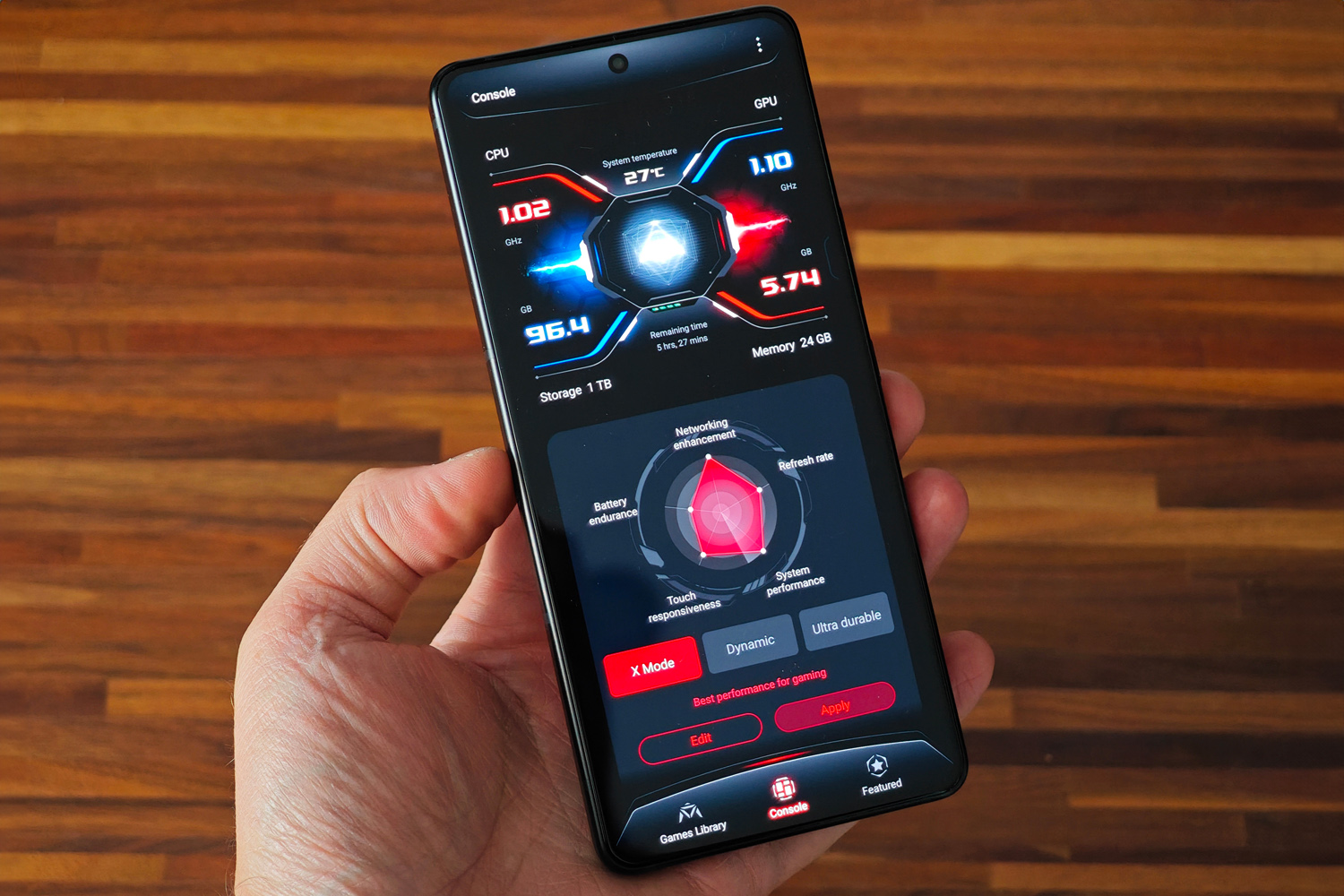
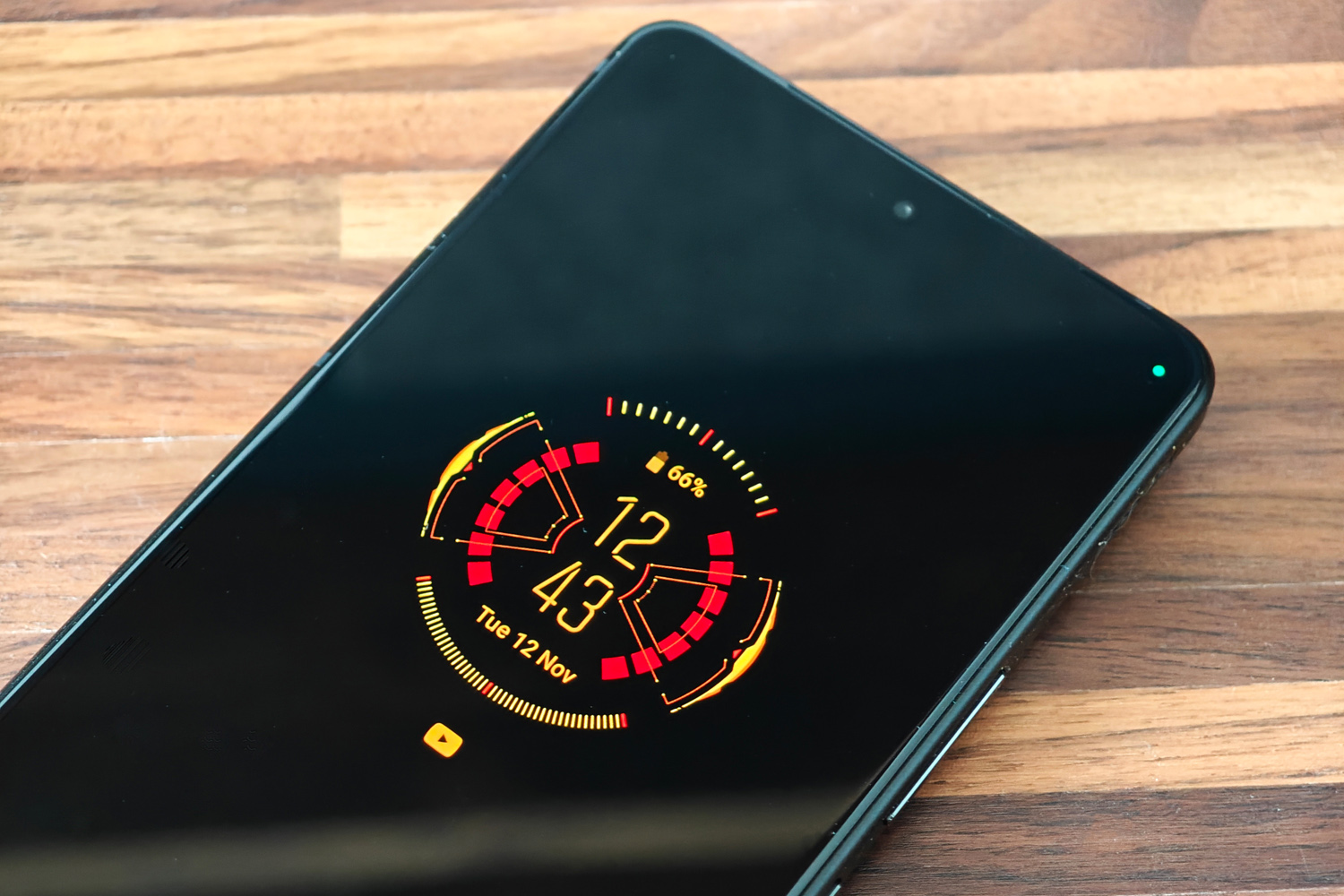
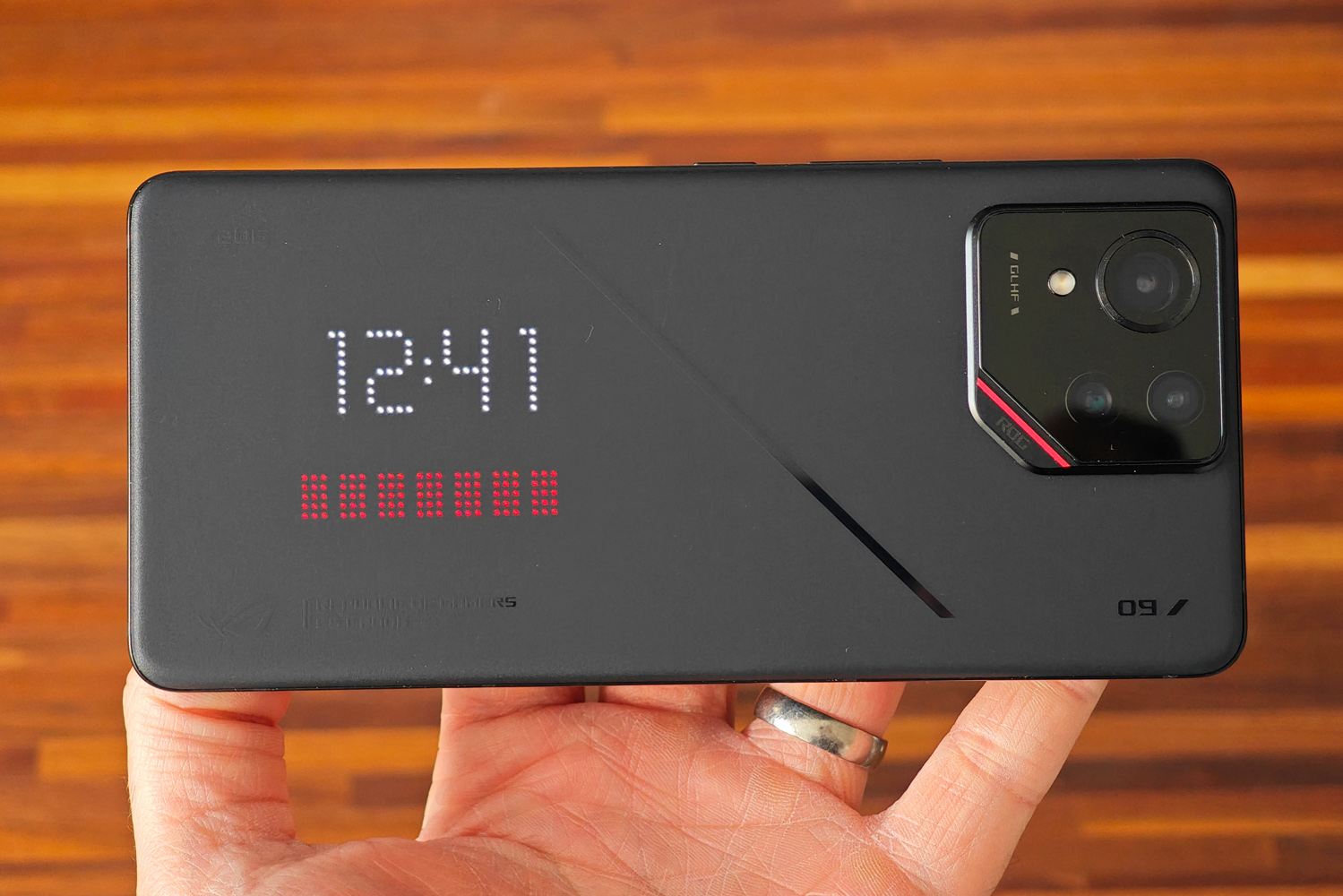
The ROG Phone 9 doesn’t feel all that different from its predecessor on the software side. Asus’ heavily themed version of Android returns, though you’re given plenty of options during the initial setup to keep things close to Google’s stock UI if you prefer. I appreciate how granular it all is, letting me keep the more customisable volume settings but a simpler style of quick settings menu. It’s great to see a few toned-down icon sets offered alongside the aggressive ROG ones, too.
Like pretty much every phone maker this year, Asus has a few AI-powered apps up its sleeve. The generative wallpapers are average at best and messy abstract nonsense at worst, but the real-time voice recorder transcription is fairly accurate. It could be handy if you make a lot of audio notes, even if it’s not an obvious inclusion for a gaming phone. AI foreign language translation is nice to have if you make a lot of calls in other languages – as long as they’re one of the dozen or so this phone supports.
Gamers will make a beeline for Armory Crate, which lets you customise inputs and adjust performance profiles for your installed games. Game Genie then shows up in-game, for on-the-fly changes and muting incoming notifications while you’re playing. Other than forcing the power-maximising X Mode and customising the air trigger controls, though, I’ve seen similar on non-gaming phones.
My biggest disappointment is Asus’ meagre update promise of just two new Android generations. That simply isn’t going to cut it from a phone costing four figures, not when the mainstream alternatives are promising seven new versions of Android over the lifetime of their handsets. Five years of security patches is merely a consolation prize.
Performance & battery life: Elite entertainer
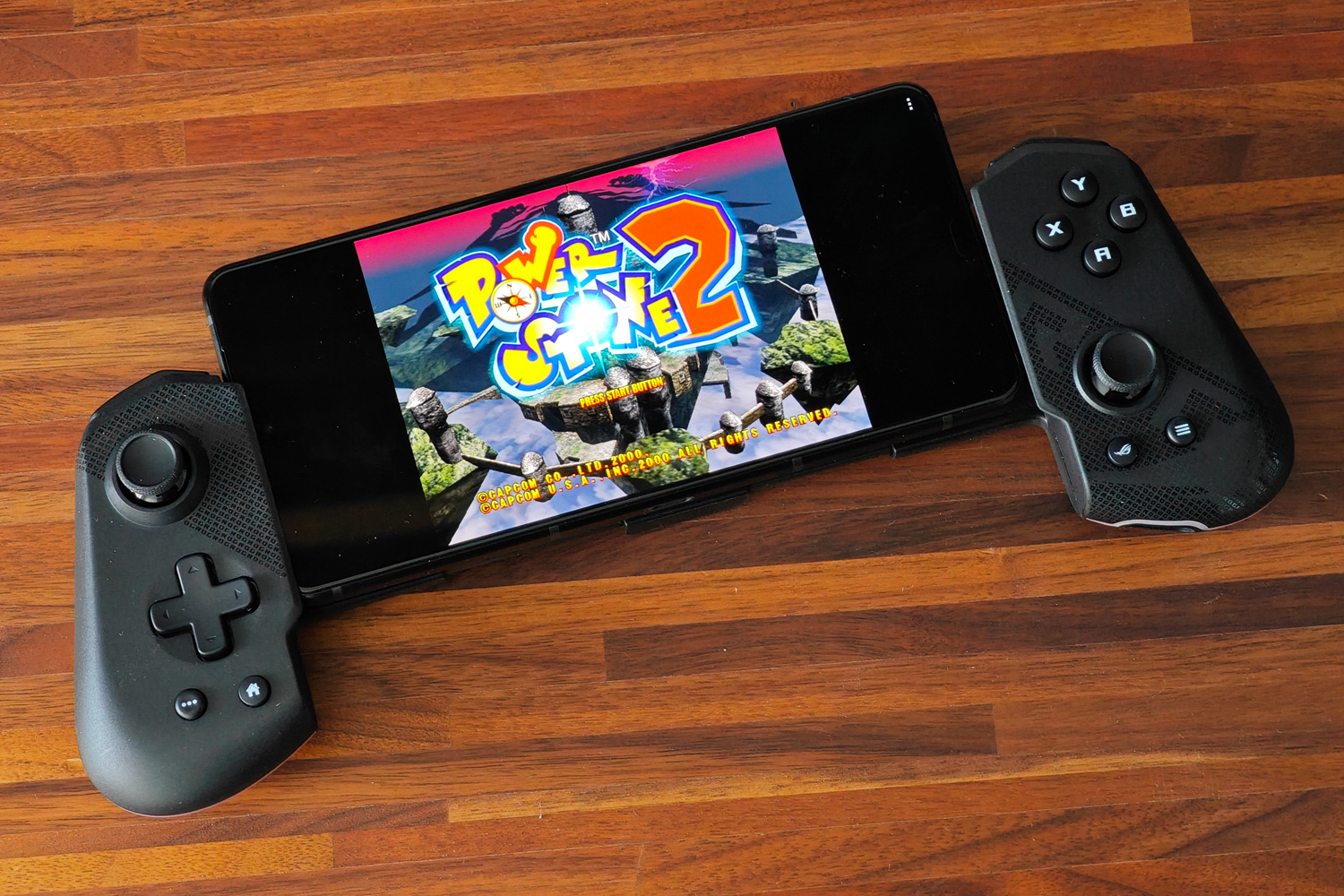
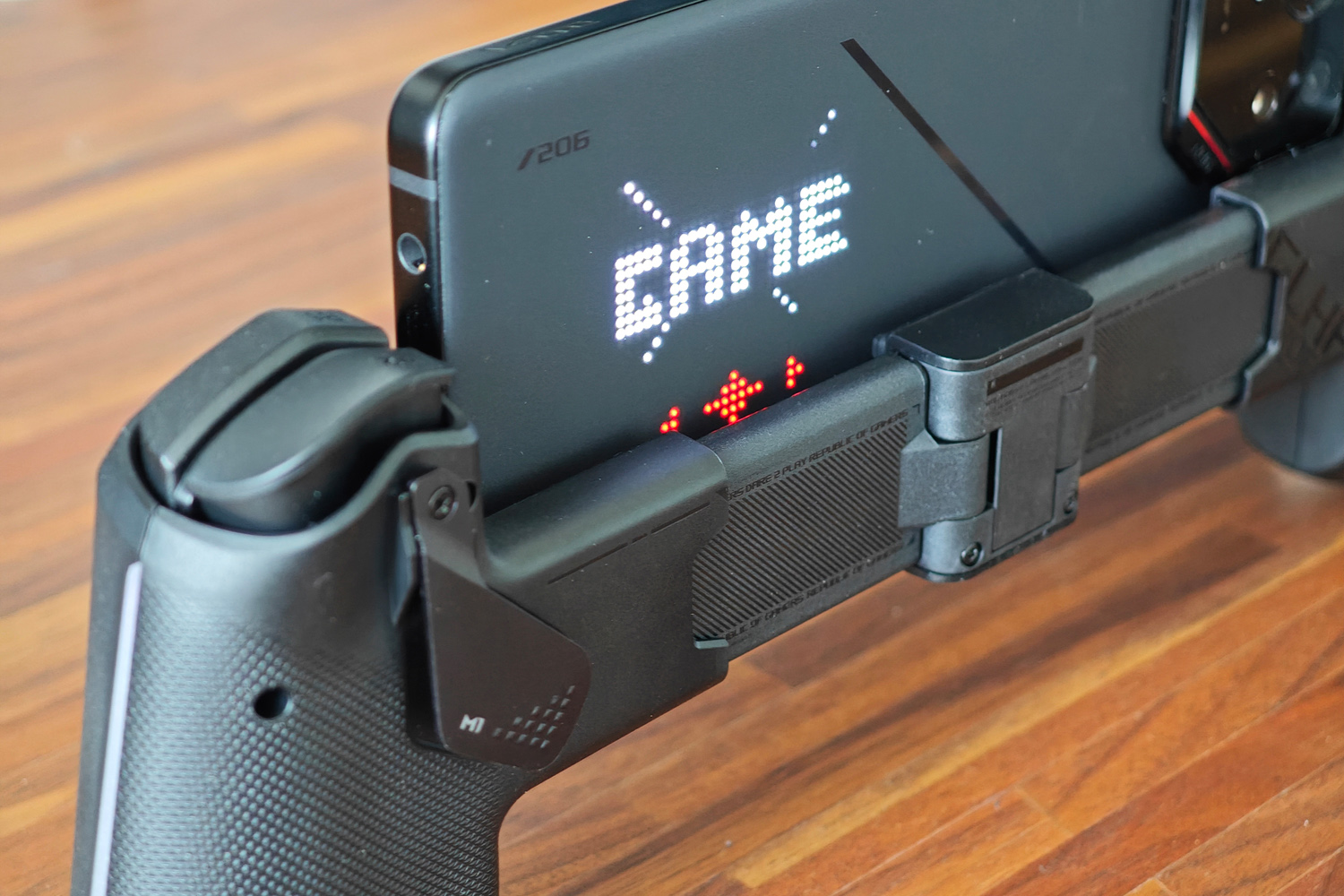
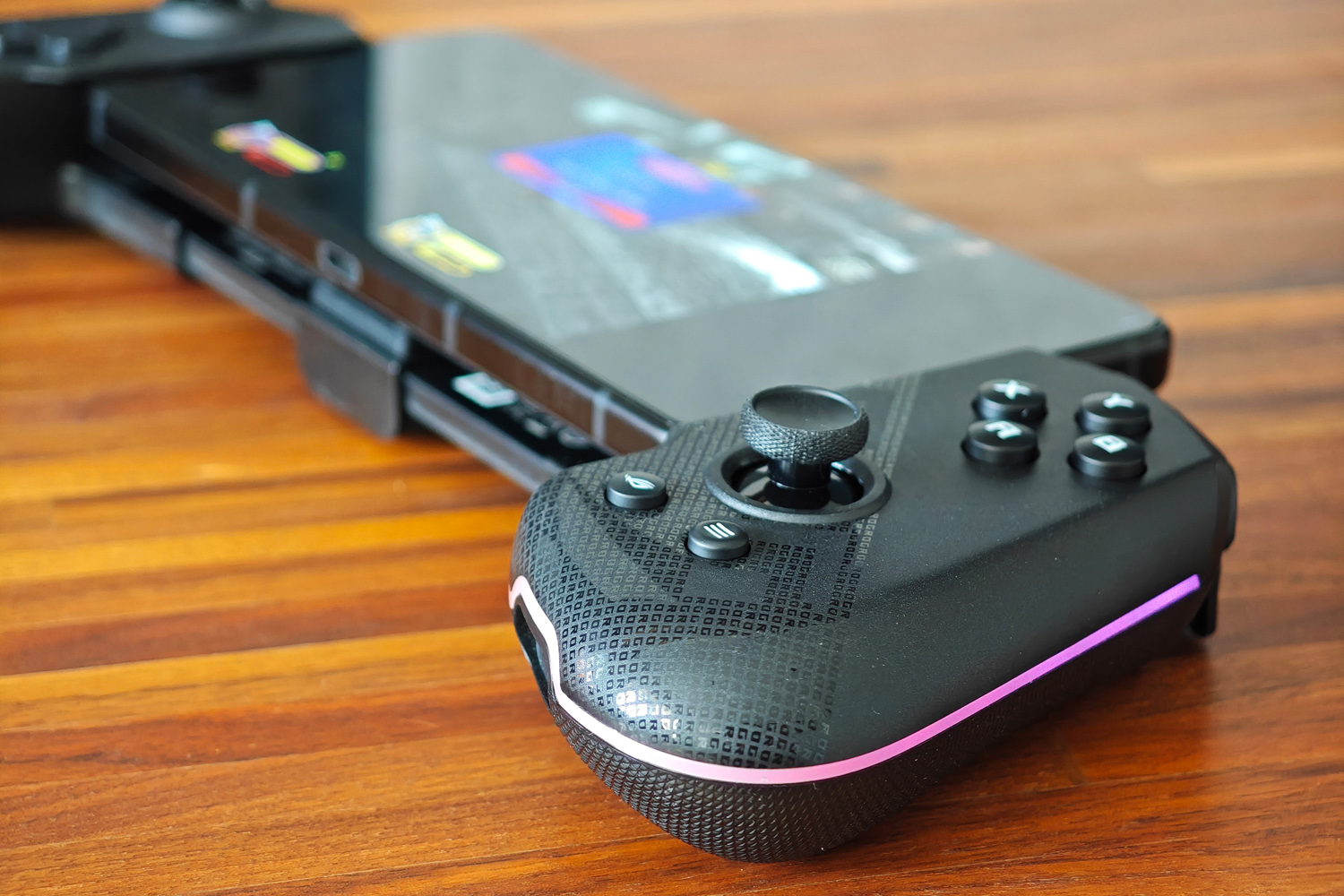
Every ROG Phone 9 has Qualcomm’s latest mobile chipset running the show, but how much memory and storage you get depends on which version you shell out for. The vanilla model and the Pro can be had with up to 16GB of RAM and 512GB of storage – which is already pretty spicy – but the Pro Edition takes things to the next level. It has a colossal 24GB of RAM and 1TB of storage, eclipsing almost every flagship phone I can name.
This is the first time I’ve benchmarked a Snapdragon 8 Elite phone, and I wasn’t disappointed by the ludicrous performance on offer. Synthetic scores outpace the previous generation by a third or more, and also give the Apple iPhone 16 Pro’s A18 Pro chipset a bit of a kicking. Interestingly Qualcomm doesn’t have everything its way this generation, with the MediaTek Dimensity 9400 able to best it in some tests (largely any that rely more on the GPU than the CPU), but Snapdragon gives as good as it gets. Rest assured you’re getting a monstrously powerful phone here.
It helps Asus has squirrelled the SoC away into the centre of the phone, away from your hands, so any heat build-up isn’t felt immediately. A significantly bigger graphite cooling sheet inside helps diffuse heat more evenly, too, so I never felt the phone was going to set my fingers tingling after a prolonged play session. Continuous benchmarking apps will tell a different story (and by all accounts show the Snapdragon’s potential for running hot in other smartphones, based on early online reports), but they’re not indicative of real-world performance.
But what does that mean for real-world use – and for gaming? As you’d expect Android was pretty much faultless, with most of my apps able to stay preserved in the memory pool without needing to reload after stepping away for a bit. Games loaded quickly and defaulted to their highest detail settings. Not every title will be able to max out the 185Hz refresh rate option, but you won’t be left wanting for more frames. Diablo Immortal comfortably ran at around 60fps, and emulation – including modern consoles – was mighty impressive too. The Tessen mobile controller (an optional extra) really came into its own here.
Just keep in mind this soon won’t be the only pone with such a beefy chipset. Rivals may not be able to match it for thermals, but if your gaming sessions tend to be under an hour you probably won’t lose much with a phone that runs hotter.
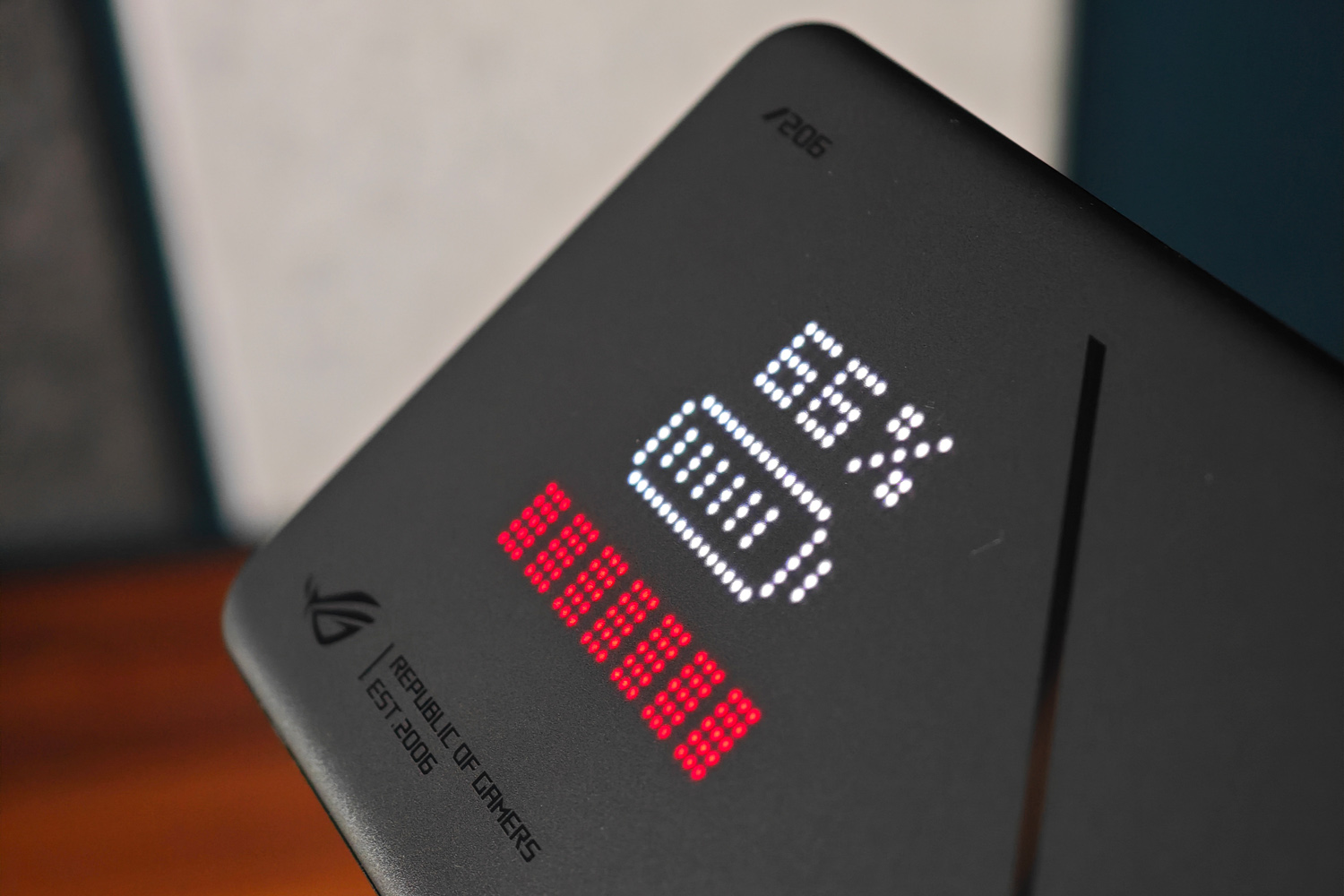
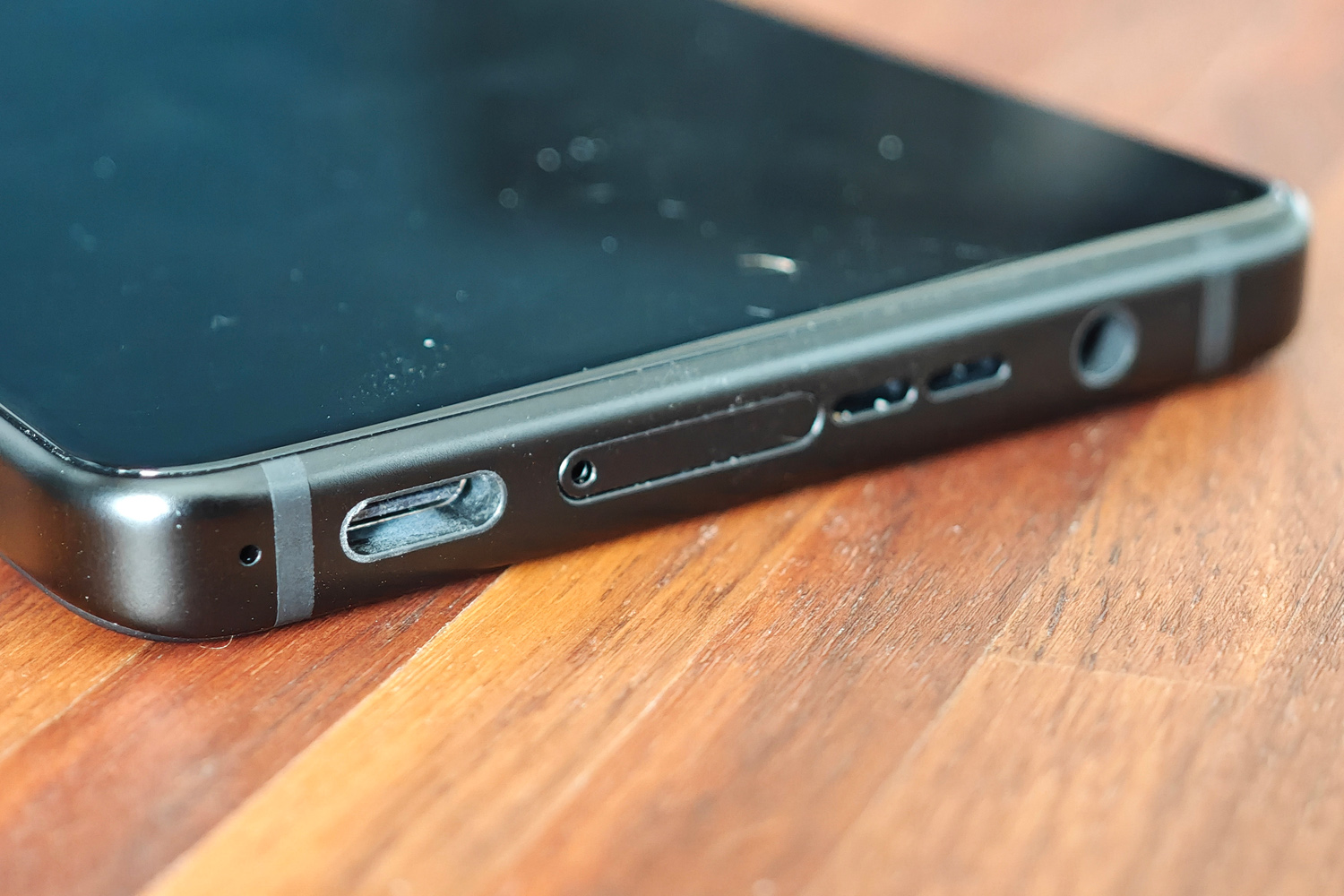
The ROG Phone 9 Pro’s 5800mAh battery is a 300mAh capacity boost from last year, and far bigger than anything Samsung, Google or Apple currently offers. Only the current crop of flagships from Chinese brands like Xiaomi, Honor and Oppo have it licked. As ever, gaming has a heavy impact on how long it’ll survive between recharges. I managed to drain it by mid-afternoon with uninterrupted play of demanding 3D titles, but even with a few hours of gaming, you’ll have no trouble lasting a full day. Stick to the basics and stay on Wi-Fi rather than 5G and it’ll nudge two days quite happily. I’m expecting this to be the standard for 2025’s big battery flagships, but right now it’s among the best in its class.
Charging times haven’t changed at all from the previous generation, meaning 65W wired top-ups and 15W wireless ones. Those are decent, if not class-leading.
Asus ROG Phone 9 Pro verdict
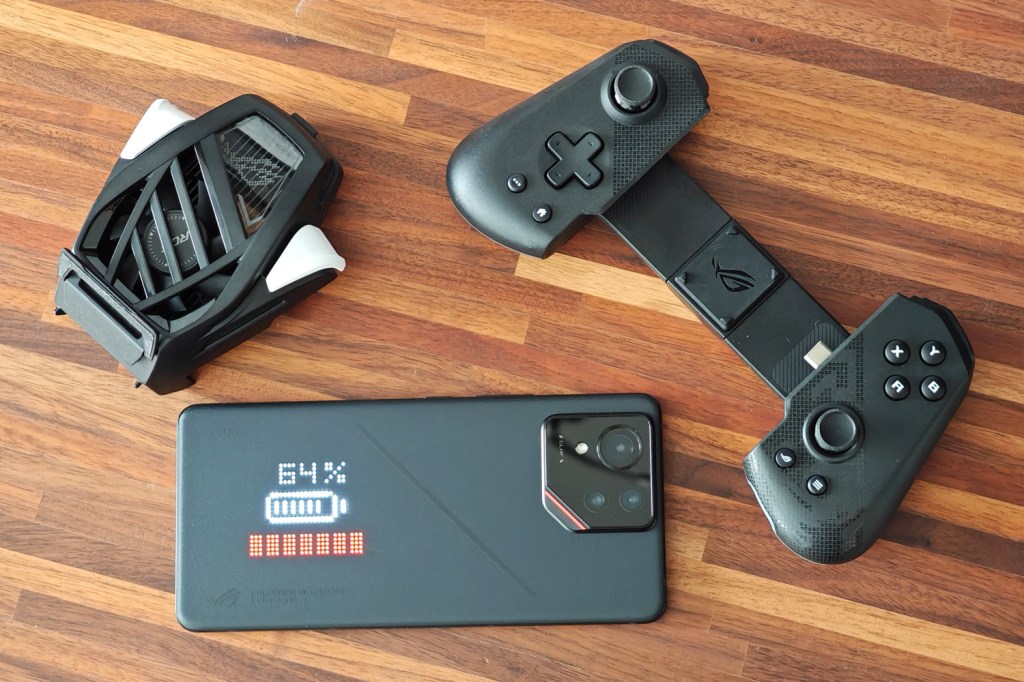
Last year’s ROG Phone didn’t fully fling open the door to the non-hardcore gaming crowd – but it definitely took off the deadbolt. Things have changed dramatically for 2024, even though the ROG Phone 9 Pro brings a few upgrades that’ll keep up its wider audience appeal. The main camera has improved for both stills and video; the bigger battery bring epic endurance when you’re not gaming; and the two-colour Anime Vision LEDs are especially easy on the eye, without going OTT on the rest of the styling front.
There’s also no denying this is a rapid phone, and even if you’re not bolting on the external cooler it’ll demolish any game you’d care to throw at it. That might be true of other Snapdragon 8 Elite handsets when they arrive, but none will have the range of gamer-grade accessories the ROG Phone does, or fan favourites like the 3.5mm port and dual USB-Cs. Those rivals will almost certainly be better camera phones, though – and most of them will have a much better update promise than Asus’ frankly poor two Android generations.
Serious mobile gamers will feel those are compromises worth making, but everyone else will have to think very carefully before taking the plunge.
Stuff Says…
With prodigious performance and gamer-focused features, the Asus ROG Phone 9 Pro is the undisputed king of its niche. You’ve got to be committed to take one over an all-rounder flagship, though.
Pros
Outrageously powerful and with an extensive gaming accessory range
Rapid refresh display and engaging audio
Subtle take on gamer-grade design, with distinctive two-colour matrix lights
Cons
Other flagships aren’t exactly slow in comparison
Cameras can’t compete with similarly-priced mainstream rivals
Pro Edition model remains eye-wateringly expensive
Asus ROG Phone 9 Pro technical specifications
| Screen | 6.78in, 2400×1080, 185Hz AMOLED |
| CPU | Qualcomm Snapdragon 8 Elite |
| Memory | 16/24GB RAM |
| Cameras | 50MP + 13MP ultrawide + 32MP telephoto w/ 3x optical zoom rear 32MP front |
| Storage | 512GB/1TB on-board |
| Operating system | Android 15 |
| Battery | 5800mAh w/ 65W wired, 15W wireless charging |
| Dimensions | 164x77x8.9mm, 227g |


